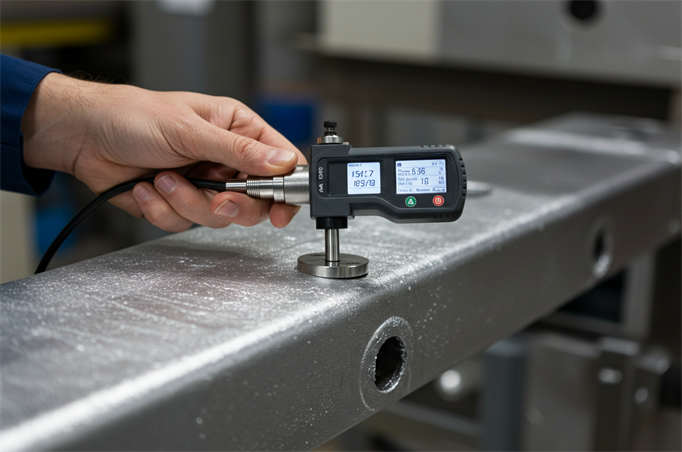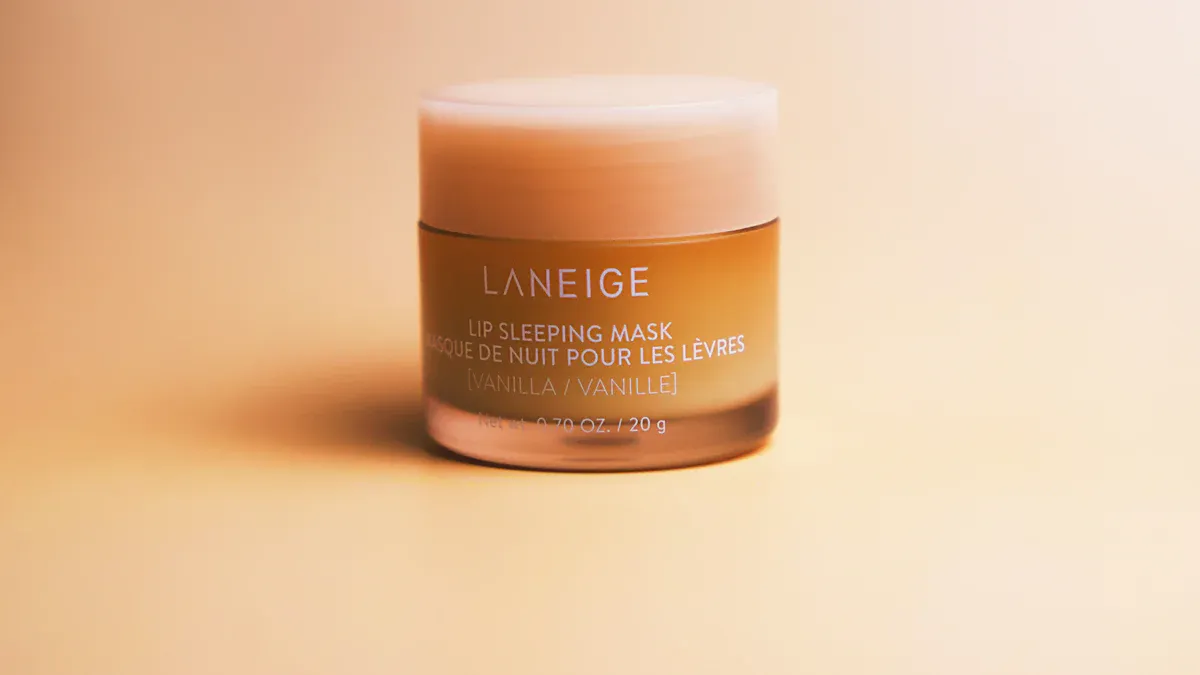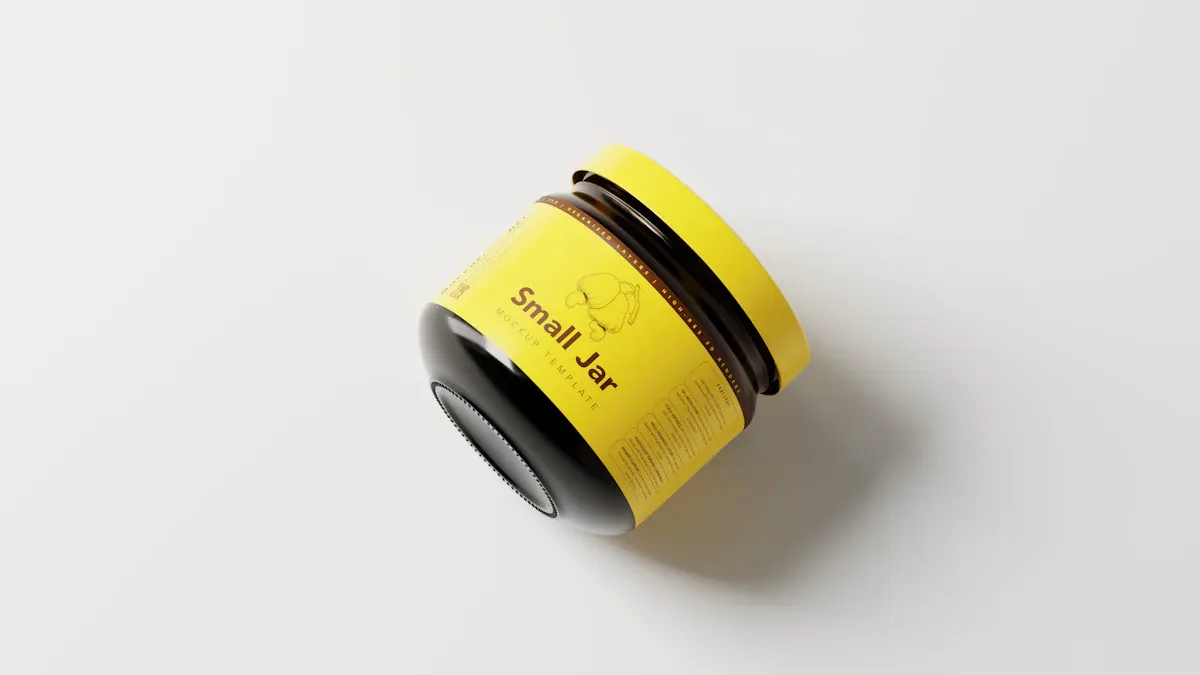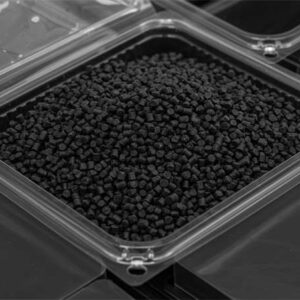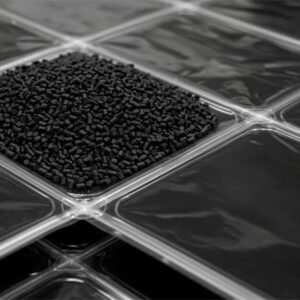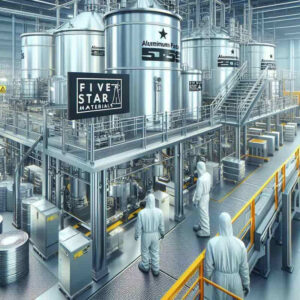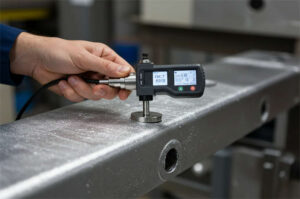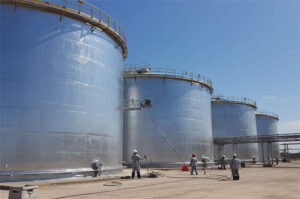You might ask, is aluminum paste toxic? The answer depends on the type you pick. Water-based aluminum paste is usually safer for people and nature. Stronger rules and a need for green products make companies use more water-based types. They use less solvent-based aluminum paste now. Knowing these differences helps you stay safe and protect the planet. Choose carefully when you buy or use aluminum paste.
Principaux enseignements
- Pâte d'aluminium à base d'eau is usually safer for people and nature. It makes less bad fumes and is simple to clean up.
- Pâte d'aluminium à base de solvant can let out harmful VOCs. These can cause health problems and hurt the environment. Be careful when you use it.
- Always wear safety gear like gloves and safety glasses. This helps stop skin problems and breathing issues.
- Work in places with good airflow to lower fumes and dust. This keeps you safer when using aluminum paste.
- Throw away aluminum paste the right way. Follow local rules for hazardous waste to keep you and nature safe.
Is Aluminum Paste Toxic
Main Differences
If you wonder if aluminum paste is toxic, you should check the type. Water-based and solvent-based aluminum pastes have different dangers. Water-based aluminum paste uses water to carry the aluminum. Solvent-based aluminum paste uses chemicals from oil. This makes each type affect people and nature in different ways.
Water-based aluminum paste gives off fewer VOCs. VOCs can make the air dirty and hurt living things. Solvent-based aluminum paste lets out more VOCs. This can cause air pollution and health issues. Water-based types are easier to clean and throw away. Water breaks down on its own. Solvent-based types need special care when you get rid of them. The chemicals can hurt the ground and water.
It is important to know how you might touch aluminum paste. Here are the main ways people get exposed:
- Dietary contact: You might eat foods with aluminum, especially if they have food additives.
- External contact: Your skin can touch aluminum, especially if you use things like deodorants.
- Inhalation: Breathing in aluminum dust is not common for most people, but factory workers can face this risk.
Health and Environment
You may ask if aluminum paste is toxic to people or nature. The answer depends on how much and how often you are exposed. Most people do not get hurt by small amounts. Workers who breathe in aluminum dust every day have higher risks.
Rules help keep people safe. Groups like NIOSH and OSHA set limits for how much aluminum you can breathe at work. Here is a table that shows these limits:
| Organization | Type of Limit | Limit (mg/m3) |
|---|---|---|
| NIOSH | TWA (total) | 10 |
| NIOSH | TWA (resp) | 5 |
| OSHA | TWA (total) | 15 |
| OSHA | TWA (resp) | 5 |
If you get too much aluminum paste, you might feel sick. Animals may eat less, have weaker bones, and changes in minerals in their bodies. People who get exposed for a long time can get bone disease, anemia, and nerve problems. Some studies tried to find links between aluminum and diseases like Alzheimer’s, but results are not clear.
| Species | Symptoms |
|---|---|
| Animals | Eat less, weaker bones, changes in minerals, less phosphate, more calcium, less bone minerals, aluminum builds up in body. |
| Humans | Bone disease, anemia, nerve problems, possible links to Alzheimer’s disease with long-term exposure. |
Some people say aluminum in vaccines or other things causes autism or other diseases. Many studies show this is not true. Big studies with millions of kids found no link between aluminum and autism or delays in development.
When you think about nature, water-based aluminum paste is safer. It gives off fewer bad gases and is easier to throw away. Solvent-based types can make the air and water dirty if not handled right. Still, making aluminum paste uses a lot of energy and can hurt habitats, no matter the type.
Tip: Always use aluminum paste where air can move and follow safety rules at work. This helps keep you and nature safe.
Qu'est-ce que la pâte d'aluminium ?
Composition
Aluminum paste looks shiny and thick. It is made by crushing aluminum flakes and mixing them with a liquid. The liquid can be water or a chemical solvent. This mix makes a paste that spreads and sticks well. The aluminum flakes make the paste look metallic and shiny. The size and shape of the flakes can change how the paste works. Some pastes have tiny flakes for a smooth look. Others have bigger flakes for more sparkle.
Pâte d'aluminium à base d'eau uses water as the main liquid. It often has small amounts of surfactants or stabilizers to keep it mixed well. Solvent-based aluminum paste uses chemicals like mineral spirits or hydrocarbons. These chemicals help the paste dry fast and stick to some materials. You should always read the label to know which type you have.
Note: Picking water-based or solvent-based aluminum paste changes how you use it. Always follow the safety rules.
Uses
Aluminum paste is used in many industries. It gives a shiny look and helps with special jobs. Here are some ways it is used:
- Car makers use it in paint for smooth, fancy finishes.
- Factories use it in coatings for bright, sparkly looks and good coverage.
- Screen printing shops use special pastes for printing on fabric and plastic.
- The plastics industry adds it to masterbatches for a metallic look.
- Builders use it to make Autoclaved Aerated Concrete (AAC) for lighter, warmer buildings.
- Printing ink companies use it to make packaging and labels shiny.
- Electronics makers use it in sticky glues and to help solar panels work better.
| Industry | Primary Applications |
|---|---|
| Revêtements automobiles | Small flakes for smooth, fancy metallic finishes without sparkle. |
| Revêtements industriels | Bigger flakes for bright, sparkly looks and better coverage. |
| Screen Printing | Special thickness and solvent for use with mesh screens. |
| Plastics Industry | Used as a metallic color for cool finishes in masterbatches. |
| Construction | Needed for making AAC, which is light and keeps buildings warm. |
| Printing Ink | Makes packaging and labels shiny and eye-catching. |
| Electronics | Used in sticky glues and to help solar panels work better. |
You can see aluminum paste is important in many things you use. Its shiny look and helpful features make it popular in art and industry.
Pâte d'aluminium à base d'eau
Toxicity
You might ask if water-based aluminum paste is toxic. Water-based aluminum paste is safer than solvent-based types. It uses water, so it does not make many bad fumes. Most people do not get sick from touching a little bit. You should not breathe in dust or get it in your eyes. If you use a lot, wear gloves and a mask. Water-based aluminum paste can still hurt fish and plants if it gets into rivers or dirt. Aluminum is not needed by water animals, and too much can make it hard for fish to breathe.
Sécurité
You need to follow safety rules when you use water-based aluminum paste. Good safety habits keep you and others safe. Here is a table with important safety steps:
| Procedure | Description |
|---|---|
| Spill Prevention | Be careful when loading and unloading. Have spill kits ready. |
| Emergency Response | Wear protective gear if there is a spill. Block off the area. Tell the safety team. |
| Fire Procedures | Use dry chemical or CO2 fire extinguishers. Do not use water. |
| Reporting | Tell your boss and safety team about accidents right away. |
| Handling & Loading | Check your protective gear. Work where air moves well. |
| Storage | Keep away from heat. Close containers tight. Store at the right temperature. |
Tip: Always read the label and follow your workplace rules. This helps keep you safe and stops accidents.
Impact sur l'environnement
Water-based aluminum paste is better for nature than solvent-based types. It makes fewer bad gases and is easier to clean up. You still need to be careful. If you pour it down the drain, it can hurt fish and plants. Aluminum can build up in water animals and move up the food chain. It can also hurt plant roots and make it hard for plants to get food. To protect nature, you should:
- Treat wastewater and leftover paste before throwing it away.
- Pick water-based aluminum paste to lower your impact.
- Follow local rules for getting rid of hazardous waste.
- Store and handle the paste so it does not spill into dirt or water.
Note: Even though water-based aluminum paste is safer, you still need to use and throw it away the right way to protect people and the planet.
Solvent-Based Aluminum Paste
Toxicity
You might ask if aluminum paste is toxic in solvent-based form. Solvent-based aluminum paste is usually more harmful than water-based types. The solvents in it can let out strong fumes called VOCs. These fumes can bother your eyes, nose, and throat. Breathing in VOCs for a long time can make you dizzy or give you headaches. It can also hurt your liver and kidneys. If the paste touches your skin, it may get dry or sore. Some people can have allergic reactions. You should never let the paste get in your eyes or mouth.
Sécurité
You must be very careful when using solvent-based aluminum paste. The solvents can catch fire fast. Keep the paste away from heat, sparks, and flames. Work in a place with good airflow so fumes do not build up. Wear the right safety gear to protect yourself. Here is a table to help you remember what to use:
| Personal Protective Equipment | Description |
|---|---|
| Gloves | Wear appropriate gloves to protect hands from solvents. |
| Safety Glasses | Use safety glasses to protect eyes from splashes. |
| Ventilation | Ensure the area is well-ventilated to disperse volatile solvents. |
| Avoid Dust | Prevent dust creation during handling. |
| Ignition Sources | Keep away from sources of ignition. |
Tip: Always check your safety gear before you start work. If you spill any paste, clean it up right away and tell your boss.
Impact sur l'environnement
Pâte d'aluminium à base de solvant can hurt nature if not handled right. The solvents can pollute the air and water. Pouring leftover paste down the drain can harm fish and plants. The chemicals can also get into the ground and hurt the soil. Never throw solvent-based paste in the trash or down drains. Always follow local rules for hazardous waste. Use spill kits to clean up leaks. Store the paste in closed containers to stop spills and fumes.
Note: Solvent-based aluminum paste can look shiny, but it is riskier for your health and the planet. Try to pick safer options when you can.
Comparison Table
You might want to know how these two types are different. The table below shows the main points side by side. This guide can help you pick the right aluminum paste for your job and safety.
| Feature | Pâte d'aluminium à base d'eau | Solvent-Based Aluminum Paste |
|---|---|---|
| VOC Emissions | Low VOC emissions, cleaner air | High VOC emissions, more air pollution |
| Toxicity | Non-toxic, safer for you and others | Contains harmful solvents, higher risk |
| Flammability | Non-flammable, safer to store and handle | Flammable, higher fire danger |
| Safety for Workers | Lower health risks, easier to clean up | More health risks, needs strict controls |
| Impact sur l'environnement | Easier to dispose, less harm to nature | Harder to dispose, can pollute water/soil |
| Compliance with Standards | Meets ROHS, PAHS, EN71 standards | Harder to meet safety and green standards |
| Durability and Performance | Good, but less weather resistance | Stronger weather and chemical resistance |
Tip: If you are not sure if aluminum paste is toxic, check the type first. Water-based aluminum paste is safer for people and nature. Solvent-based types can last longer outside, but they are more dangerous.
This table helps you make good choices. Pick water-based aluminum paste for most uses if you want less danger. Only use solvent-based aluminum paste when you need it to be extra strong and always follow safety rules.
Choosing Safely
When you pick aluminum paste, think about your project and safety. You should also care about the environment. First, ask what you need the paste to do. Some projects need it to last outside in bad weather. Other jobs need a product that is safer for people and nature. You may wonder, is aluminum paste toxic? The answer depends on the type and how you use it.
Here is a table to help you choose the right aluminum paste:
| Criteria | Water-Based Paste | Solvent-Based Paste |
|---|---|---|
| Regulatory Compliance | Mandatory in regions with strict VOC laws | Viable in areas with lenient policies |
| Performance Requirements | Advanced additives for long-term durability | Faster drying for high-speed production |
| Economic Factors | Lower raw material costs, but may need equipment | Higher material costs, but lower initial capital |
| Sustainability Goals | Supports circular economy with recyclability | Less focus on sustainability |
If you want to help the planet, pick water-based aluminum paste. This type makes fewer bad gases and can be recycled. New water-based and colorful aluminum pastes help you follow safety rules. They also make your workplace safer.
To keep everyone safe, follow these tips:
- Wear protective gear like gloves and safety glasses when you use aluminum paste.
- Work in a well-ventilated area so you do not breathe in fumes or dust.
- Store aluminum paste in closed containers away from heat and fire.
- Clean up spills right away with the right spill kits.
- Recycle leftover paste if you can. Use wet or electrostatic separation.
- If you cannot recycle, send waste to a special landfill for dangerous trash.
- For some waste, burning it in special places can save energy and make less trash.
Tip: Always read the label and follow local rules for throwing away aluminum paste. This keeps you, your coworkers, and the environment safe.
Picking the right aluminum paste and using it the right way keeps you healthy and helps the world.
When you ask, is aluminum paste toxic, you find that water-based types are safer for you and the environment. Solvent-based pastes can harm your health and pollute nature. To stay safe, you should:
- Wear all protective gear before you start.
- Work in a space with fresh air.
- Keep containers closed when not in use.
- Clean up spills right away.
- Recycle or store waste properly.
Choose wisely and always put health and the planet first.
FAQ
Is aluminum paste safe to touch with bare hands?
You should avoid touching aluminum paste with bare hands. Wear gloves to protect your skin. Some people may get irritation or dryness. Always wash your hands after use.
Can you use aluminum paste indoors?
Yes, you can use aluminum paste indoors. Make sure you work in a space with good airflow. This helps you avoid breathing in any fumes or dust.
What should you do if aluminum paste spills?
Clean up spills right away. Use a spill kit or absorbent material. Wear gloves and a mask. Keep the area well-ventilated. Tell your supervisor if you are at work.
Does aluminum paste expire or go bad?
Yes, aluminum paste can expire. Store it in a cool, dry place with the lid tightly closed. Check the label for the expiration date. Old paste may not work as well.

